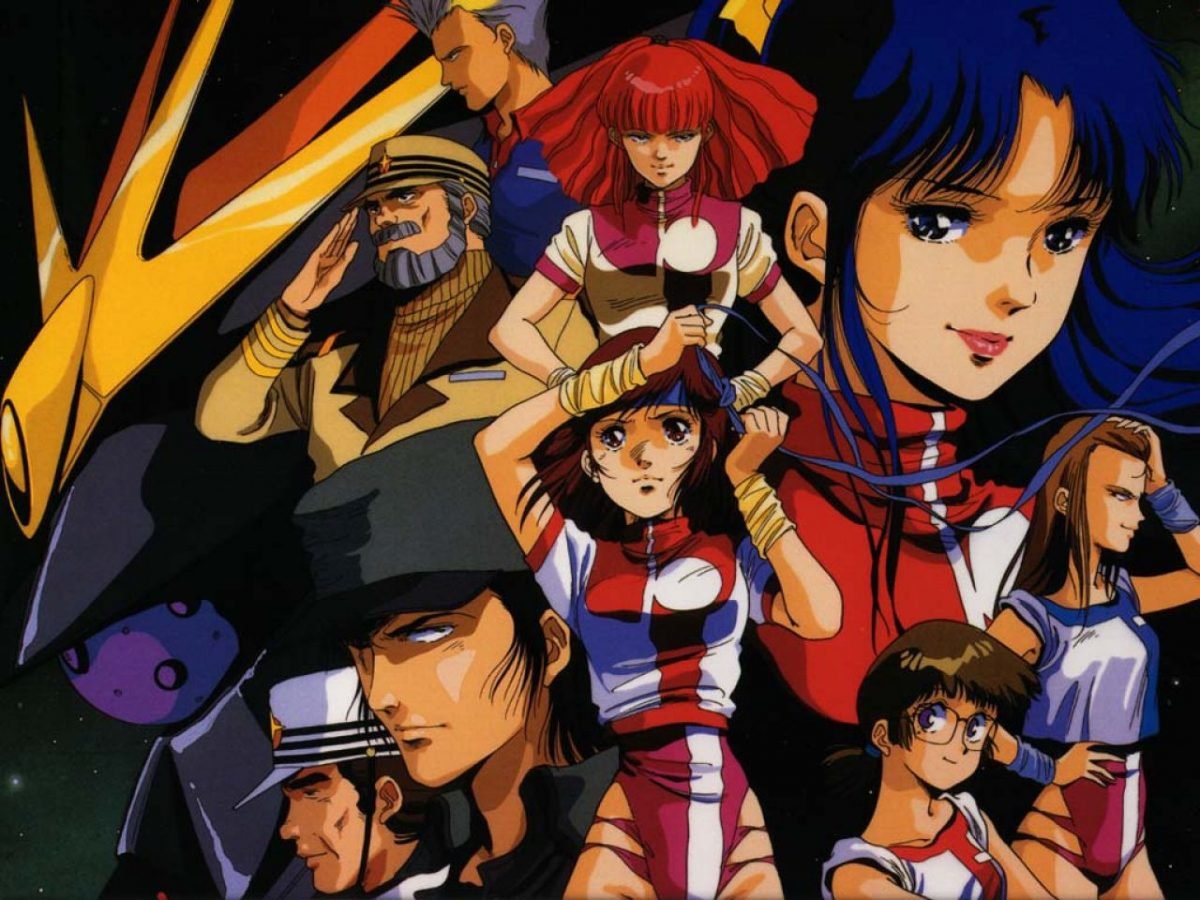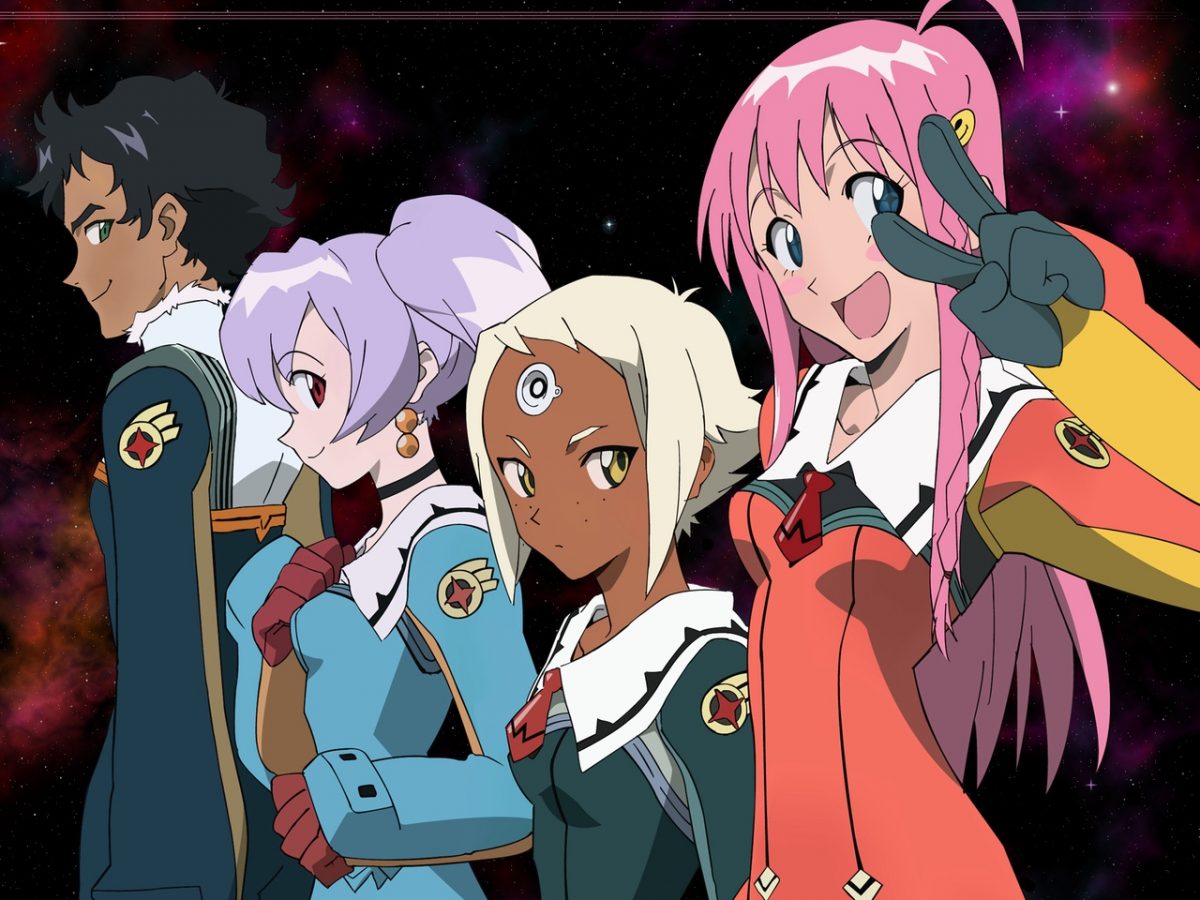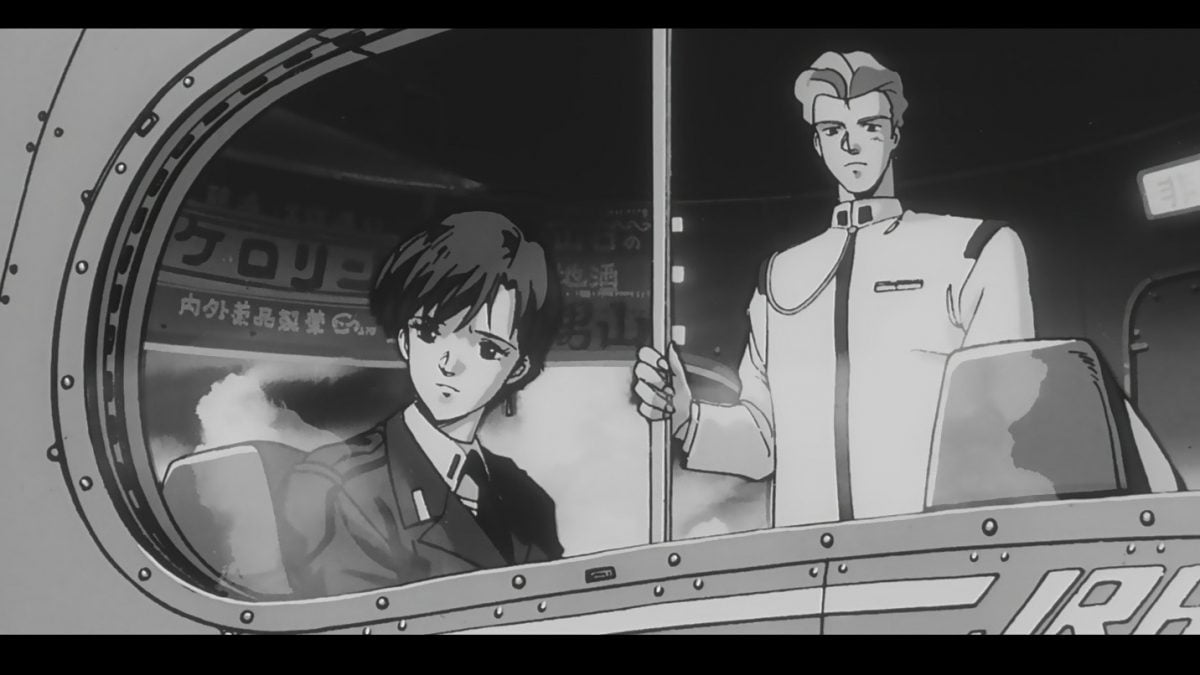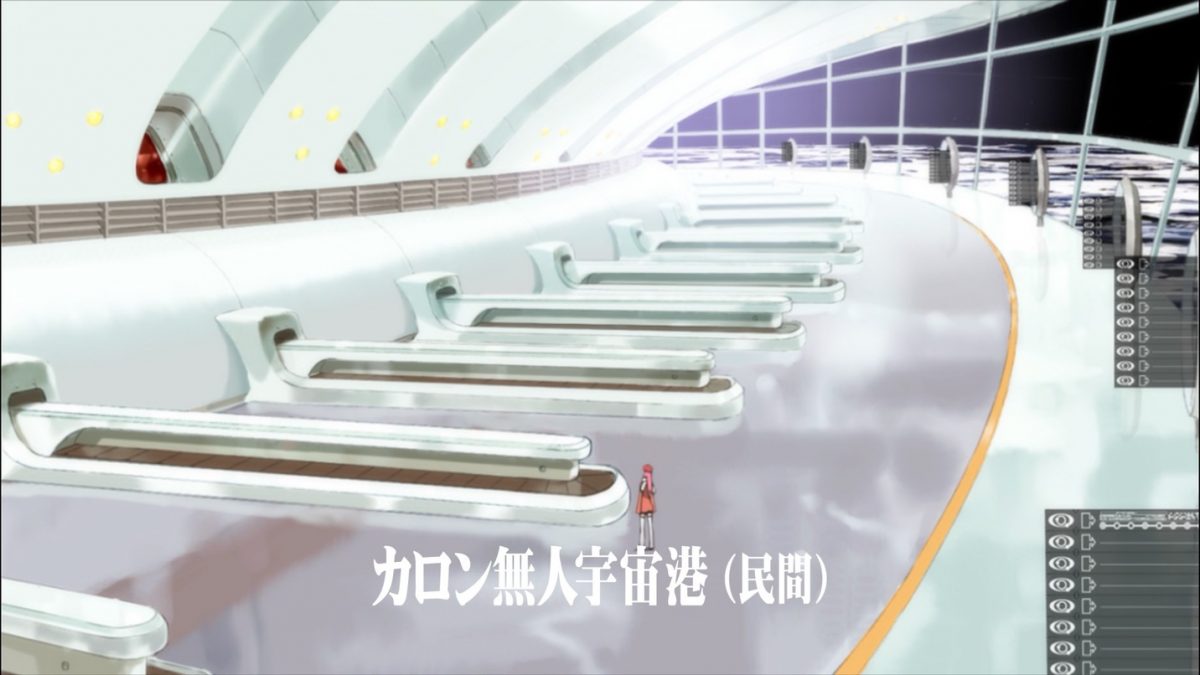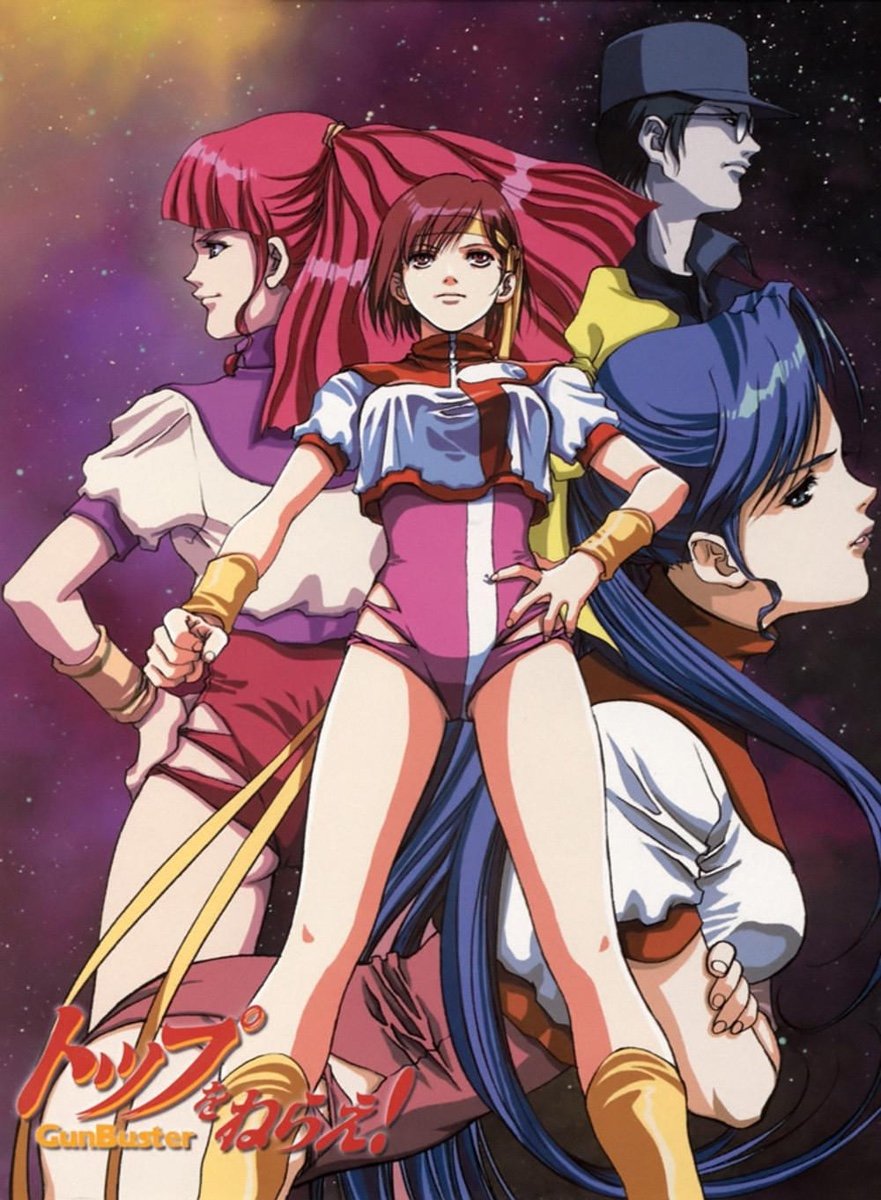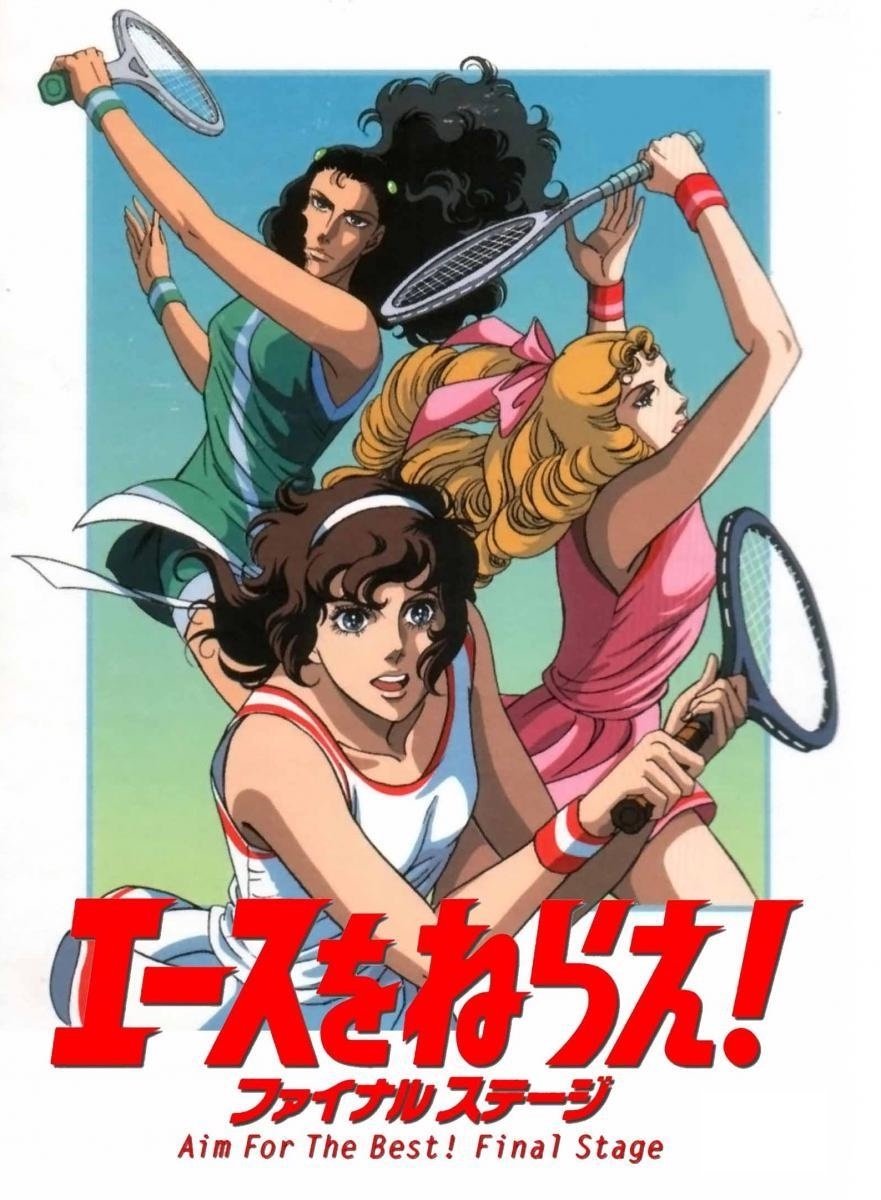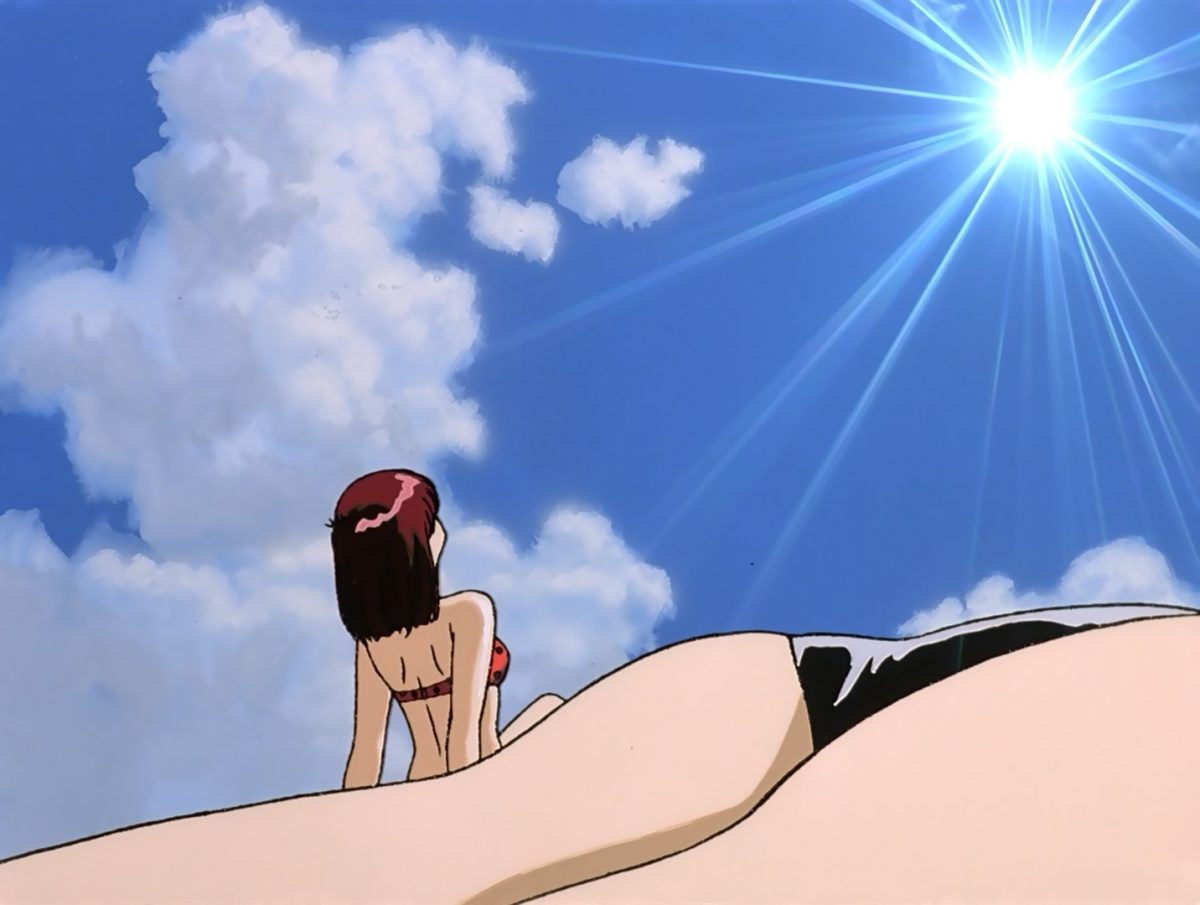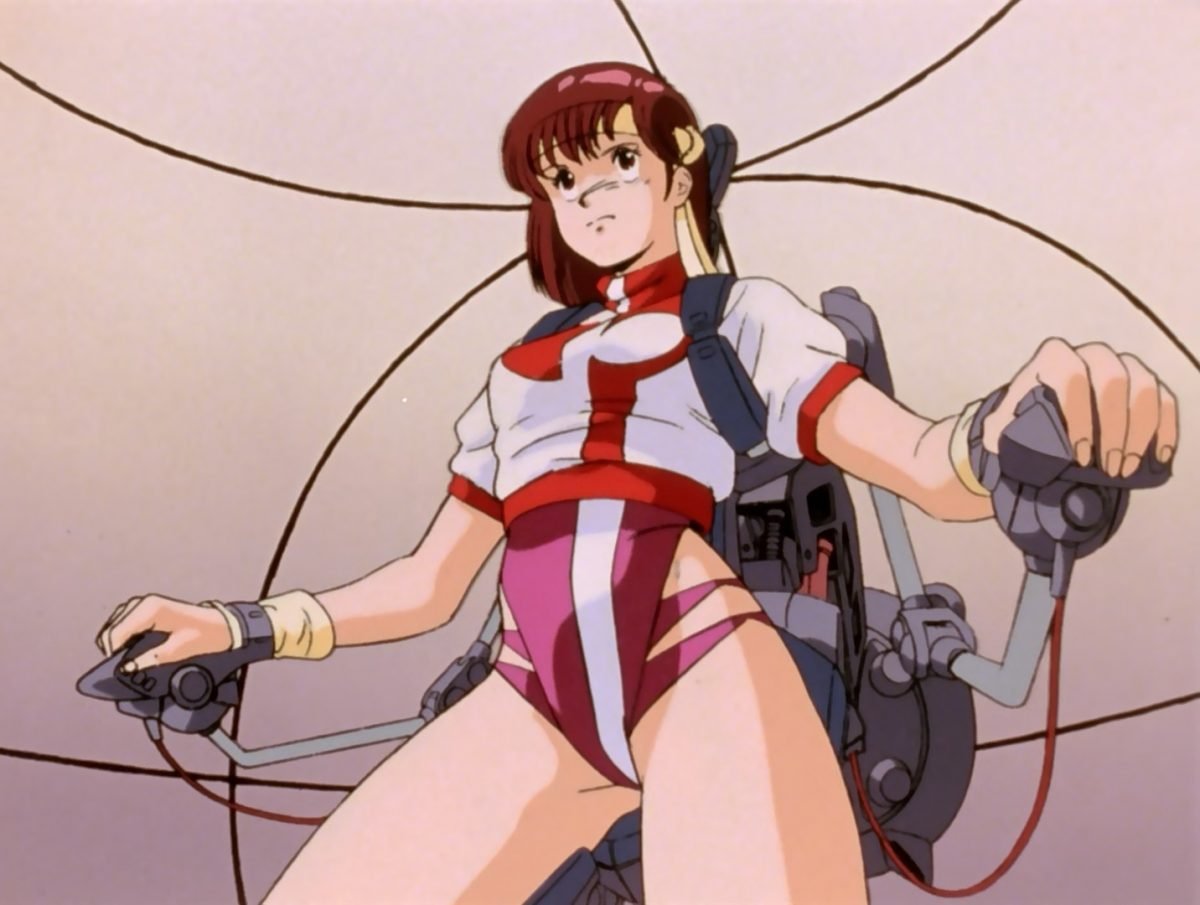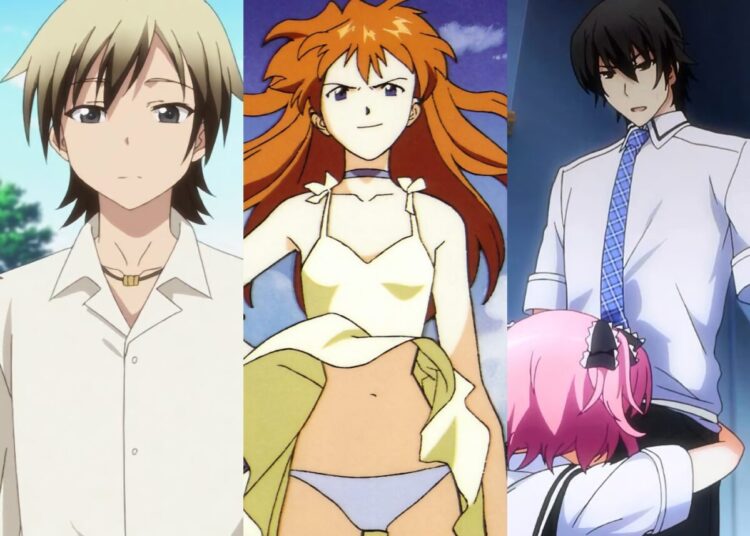One of my hobbies is re-watching the classic anime shows of my younger days, but in 1080p on a giant modern OLED television. This allows us to not only relive nostalgic shows from the old days, but I can also spot details I might have missed in the past. I’ve done this with the classic Macross: Do You Remember Love? film, and more recently with Saraba Yamato, and thrilled at being able to see dust and hair on the cels from decades ago. Recently I decided to embark on a Great Gunbuster Re-Watch and see how the classic sci-fi anime show held up in HD. Keep reading to see why Aim for the Top: Gunbuster and its sequel Diebuster are the only sci-fi robot anime you need!
The Story of Gunbuster and Diebuster
In the far-off “future” of 2016, mankind is under attack by terrible aliens known as uchu kaiju (“space monsters”), creatures who feed off of stars. In response, Earth builds fleets of space battleships and begins training cadets who will pilot giant robots to defend us. Noriko Takaya, daughter of an admiral who was killed in the first battle, has been accepted into the training school but her skills at combat are decidedly not up to snuff. Noriko’s idol Kazumi Amano tries to help her but later refuses to train with her, sure that Noriko will be killed in her first combat. Noriko slowly grows in skill, however, and using the prototype Gunbuster is able to defend her friends. Two great space battles follow that are designed to destroy the space monsters forever…though Noriko and Kazami must embark on a time-dilation journey of 12,000 years to finally return to Earth.
The “modern” sequel Diebuster follows Nono, a country girl living on Mars who pines to be an elite space pilot known as Topless. She’s befriended by space pilot Lal’C and is admitted as a member of the Topless space force. Later we learn that Nono is herself the famed Buster Machine no. 7, and that the Earth has been tricked by the space monsters in humanoid form. A great battle ensues, and Nono is sacrificed to save the Earth. Ten years later Lal’C rushes to meet two legendary pilots who will be arriving home after a long journey.
Speaking of “topless”…
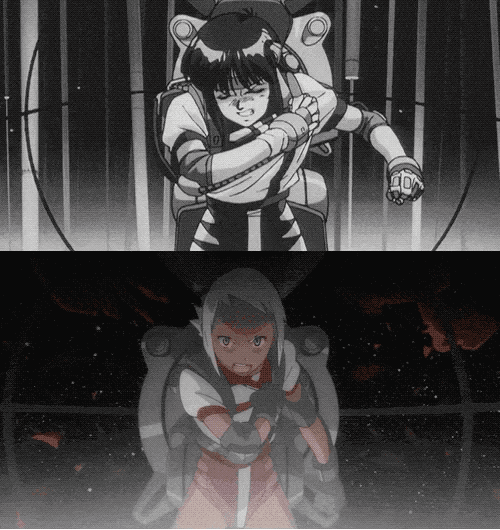
The Importance of Gunbuster and Gainax
Gainax was a company formed by former university friends who wanted to make cutting-edge animation that defined otaku culture. But the company got off to a rocky start when their first work, the gorgeous Wings of Honneamise (audio warning), became a financial flop. The company was going to disband because of the debts related to that project. Happily for anime fandom, this didn’t come to pass, and their next project was the smash hit Gunbuster.
This was great for fans, as Gainax would go on to make some of the best anime of the next quarter-century, from Nadia of the Mysterious Seas to Evangelion to FLCL to Gurren Lagann.
As usual, I love the “big, hairy audacious ideas” a show like Gunbuster gives us. Humanity has the technology to create space elevators and weapons which are powered by the planet Jupiter being shrunk down to 1/30,000th its former size. And in Diebuster, we get to see the baggage carousels in a spaceport on Pluto’s moon of Charon. How optimistic about man’s possible future in space do you have to be to dream up something like this?
Aim for the Top! Captures the Essence of the Best Western Sci-fi Novels
One joy of watching Gunbuster is picking apart what classic science fiction novels inspired the story. There are a lot of candidates:
- The time-dilation drama is clearly inspired by Joe Haldeman’s classic The Forever War, about an interstellar war and two lovers who get put on different ships, meaning they can never live together at the same time. This is basically my single favorite sci-fi novel ever.
- The “children being trained to fight space battles while enduring hazing by their comrades” is a nod to Ender’s Game, and the space monster aliens are clearly the Buggers.
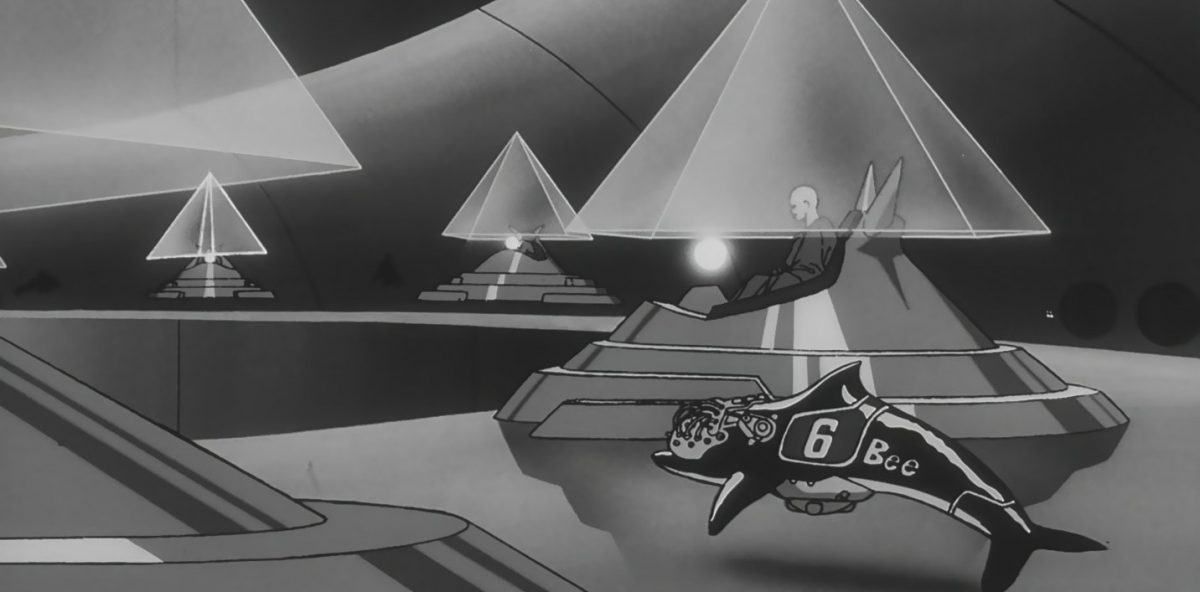
- The sentient dolphins from David Brin’s classic Uplift books even make an appearance.
- Hideaki Anno is no stranger to mining deep ideas from Western science fiction novels. The concepts of the Instrumentality Project (called the 人間保管計画 or the Humanity Completion Project in Japanese) are said to have come from the works of Cordwainer Smith.
Gunbuster is a Parody Wrapped in Satire Inside an Homage
Although it’s a sci-fi anime about the most serious of topics (mankind’s continued survival in the galaxy), Gunbuster is also an extended homage to the classic tennis anime Aim for the Ace! in which Hiromi joins the tennis team to be close to the graceful and skilled player Reika while strict new tennis coach Munakata tries to push Hiromi to aim to become the school’s top tennis star. There are many other shout-outs, including that the Gunbuster itself is a parody of Shin Getter Robo, and many lines are lifted verbatim from war films by director Kihachi Okamoto, something that of course sails over the heads of Western fans.
Gunbuster Helped Define Anime Through Sexy Fanservice
As a major anime in the then-cutting-edge OAV industry, in which anime is sold to fans directly rather than be broadcast on TV first, Aim for the Top! was able to bring us a new level of sexy fanservice that helped define how we all viewed this fresh new medium of Japanese animation. While we might all live in sexually repressed societies, here was a medium that could handle the topic of sex without limitations!
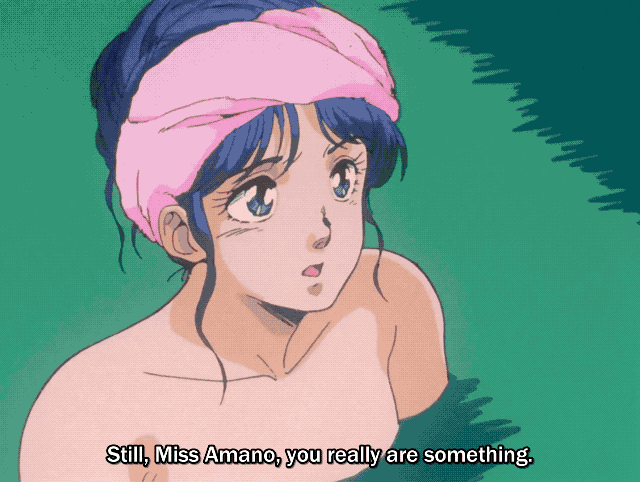
We also got the first full-frontal nudity in anime history, which was a game-changer for fans at the time.
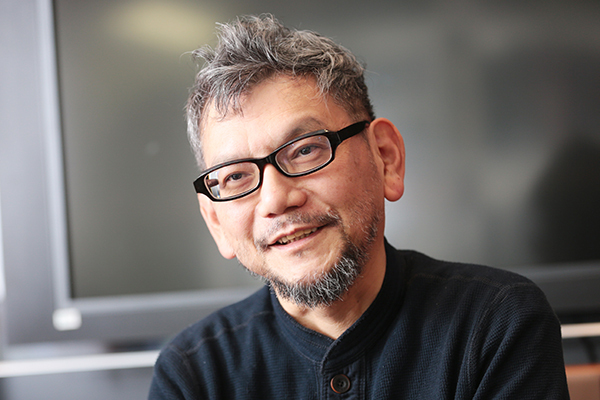
It’s an Important Milestone in the Career of Hideaki Anno
This was the first work directed by Hideaki Anno, though he’d already established himself as one of Japan’s top animators, creating the God Warrior sequences in Nausicaa of the Valley of the Wind and being named chief animator for the Macross 1984 movie. It was the first chance for fans to start to identify which features would become his hallmarks, including:
- An obsession with hierarchies and labeling everyone’s role in organizations with on-screen title cards.
- A fascination with man-made structures and spaces.
- Ridiculously precise dialogue.
- An inexplicable fascination with forcing Japanese cast members who do not speak foreign languages to speak foreign languages.
- A love of psychology, both as a tool to make his characters more multi-dimensional and also for providing character names (as in the case of Jung Freud).
- Using sexy visual fanservice to give fans a connection to his characters.
- Constantly embedding homages to classic anime and films in his works.
- An obsession with the names of ships (for example, every Eva character is named after ships from WWII). He also loves to use archaic kana like ヱヴァンゲリヲン which would be common in the pre-WWII era but are old-fashioned today, for stylistic purposes.
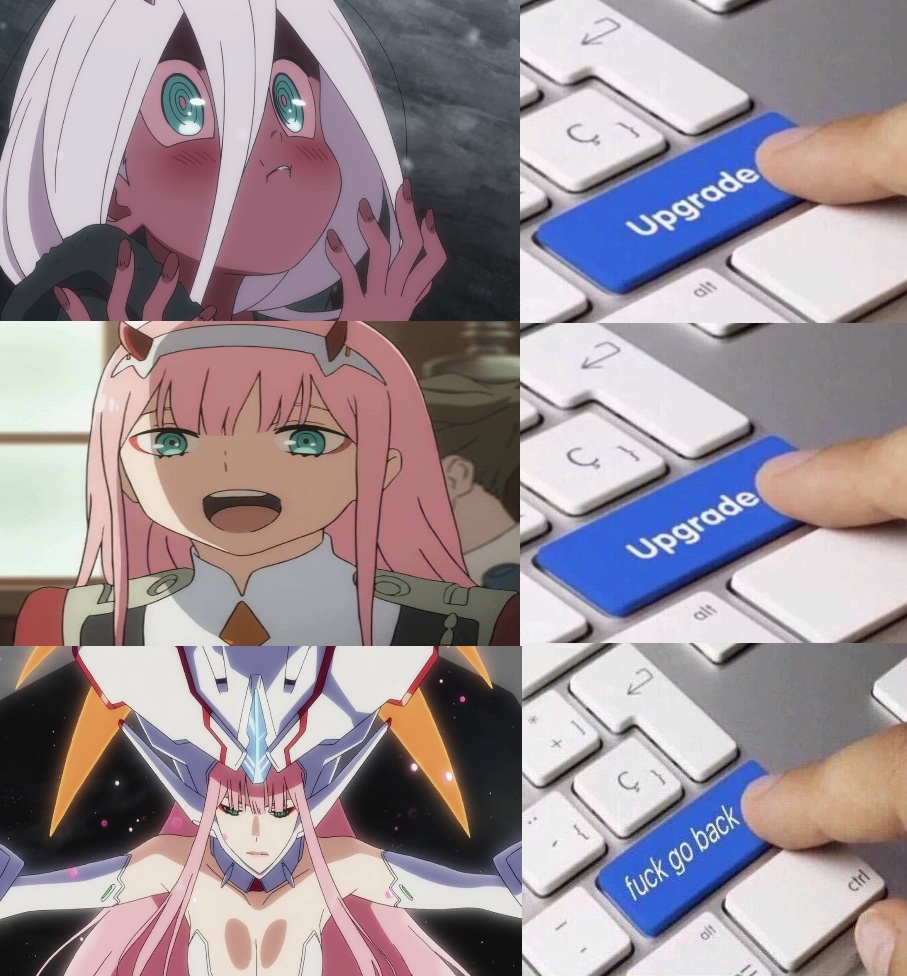
If You Wondered What Happened to Darling in the Franxx…
One fun show was Darling in the Franxx, which was made by Trigger (founded by former Gainax director Hiroyuki Imaishi) to be a “post-modern” robot anime with good character drama. Partway through the show basically became a love letter to all the great past works of Gainax. At least ten episodes before the show ended, I could see that the only possible ending for the series was for the characters to head into space and reenact the space battle from episode six of Gunbuster.
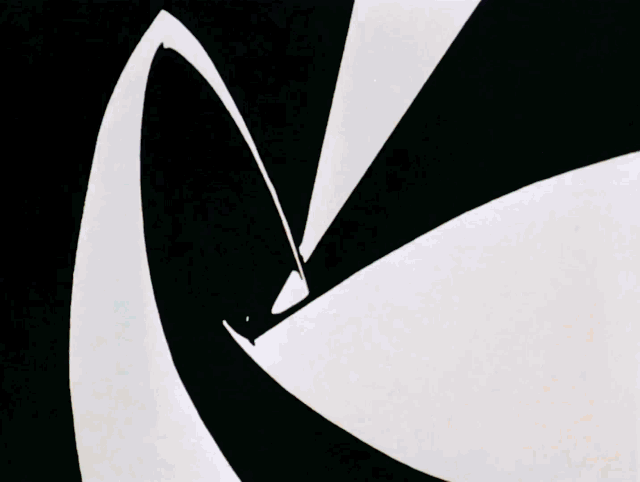
Thanks for reading this long post about the importance of Aim for the top Gunbuster and Aim the Top 2 Diebuster! Are you a fan of these classic series? Tell us below, or reply to us on Twitter!
The hardworking folks at J-List’s sister company J18 Publishing are at it again, making great 100% uncensored and fully translated hentai doujins for your collection. The new title is Ms. Misaki the Insatiable Virgin Eater, so grab it now!


